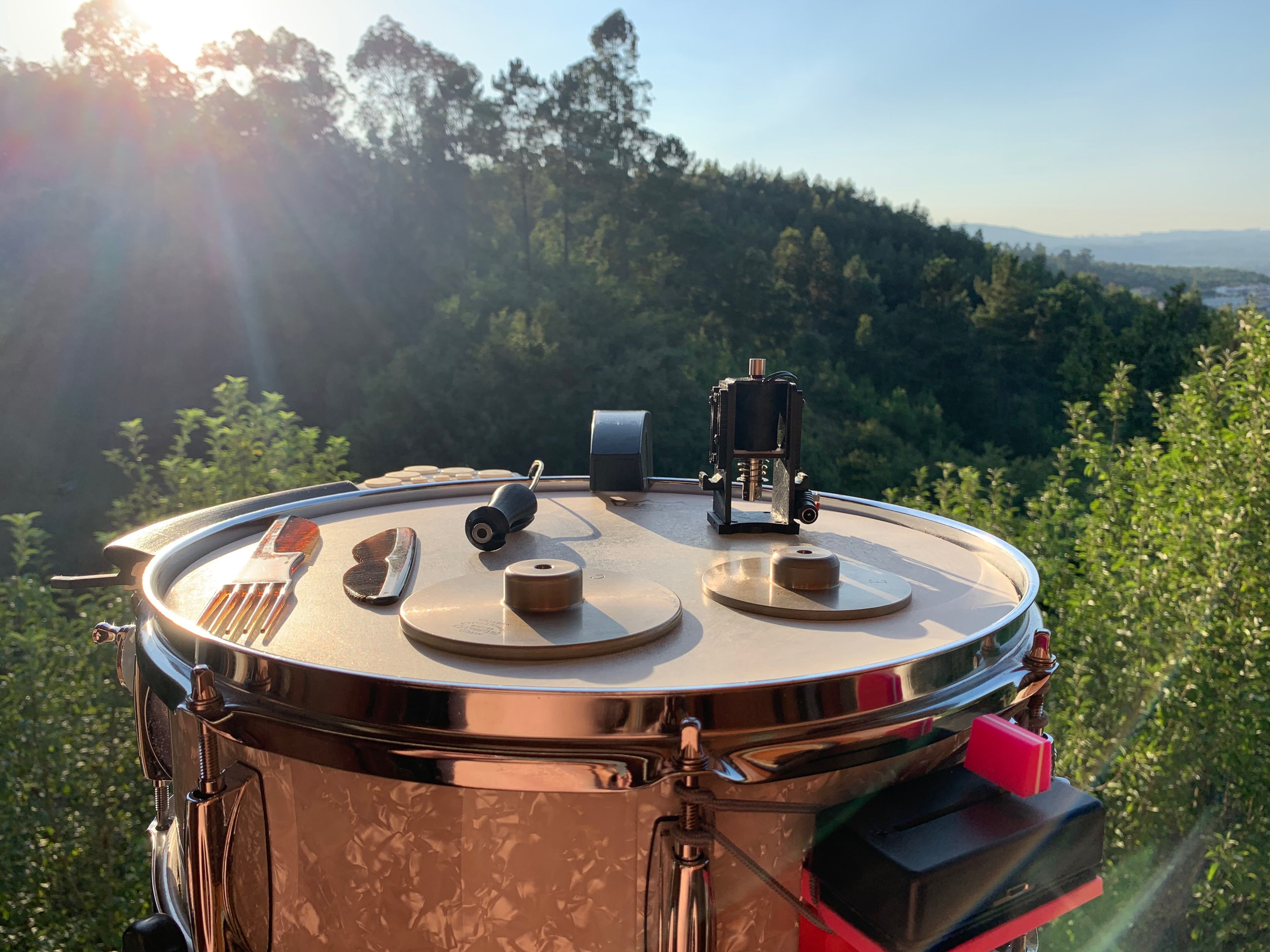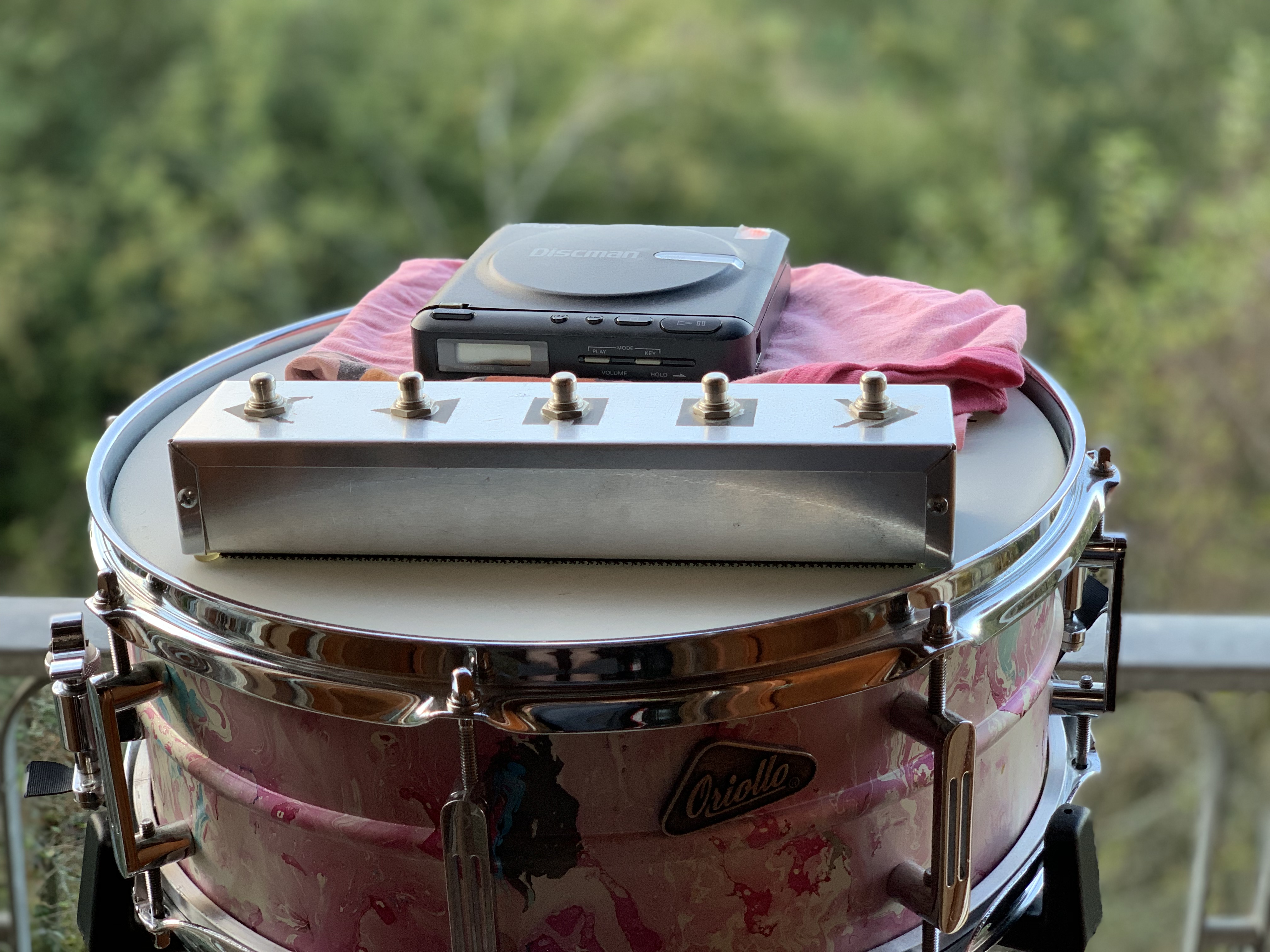Data Knot – Machine Learning tools for low latency real-time performance
I am excited to finally release Data Knot, a package for Max based on FluCoMa. It’s something I’ve been developing over the last 5 years or so, the last 3 of which were under the name SP-Tools.
Data Knot is a set of machine learning tools that are optimized for low latency and real-time performance. The tools can be used with any type of audio input, including optimizations for Sensory Percussion sensors and ordinary drum triggers.
It is made up of over 120 objects actress 13 categories spanning low latency onset detection, onset-based and real-time descriptor analysis, classification and clustering, regression and prediction, corpus analysis and querying, synthesis and modeling, audio, data, and CV processing, and a slew of other abstractions that are optimized for low latency applications.
Landscape NOON experiments
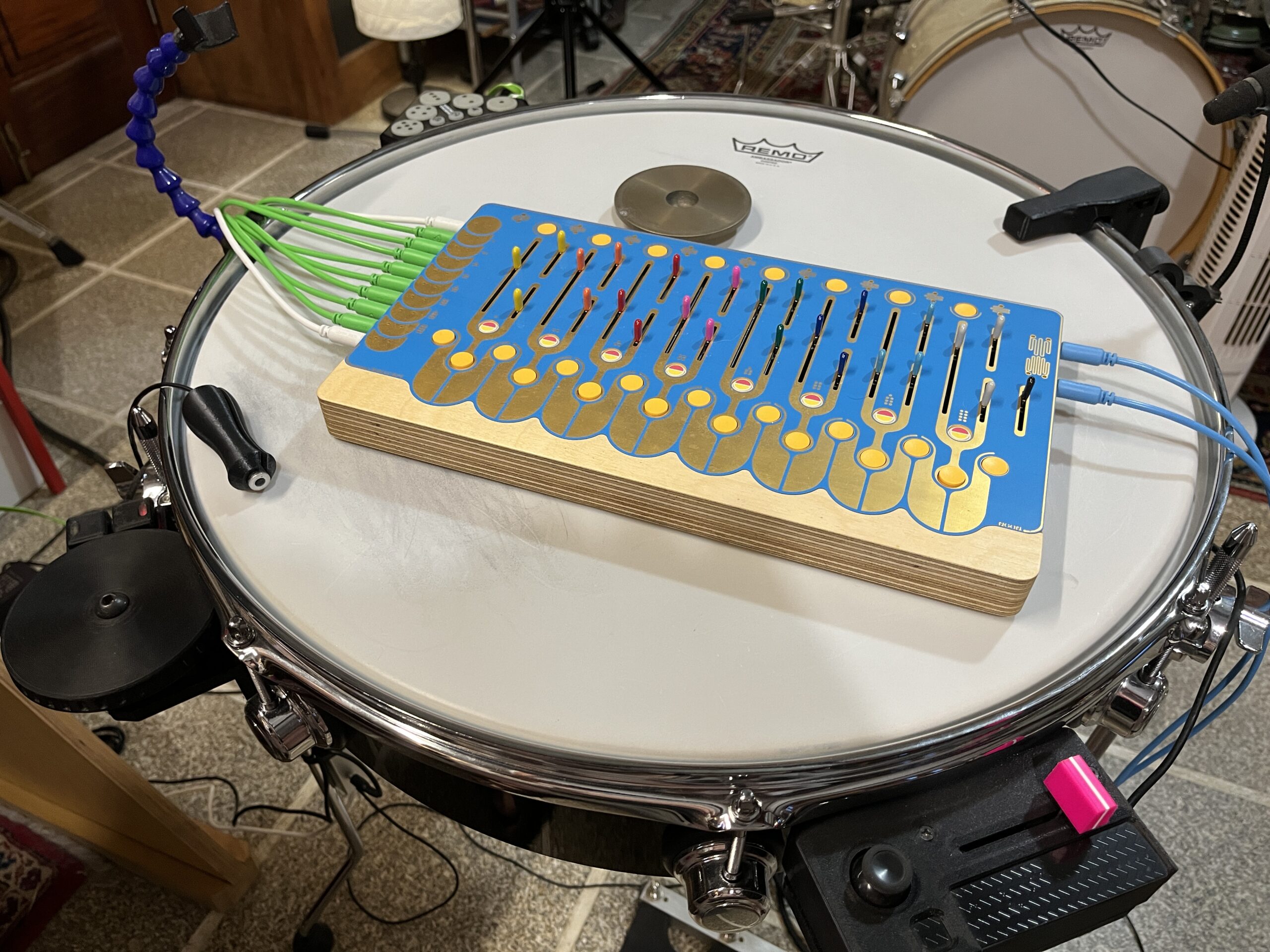
Since I first saw it announced, I’ve been super excited about the Landscape NOON. It seemed to, in one box, do what I had been wanting to achieve with my experiments in modular synthesis for a while. Being able to trigger multiple independent (or not) voices while have a lot of control over the shape and contour of them. Being a huge fan of noisy and chaotic synths, I also really like the passive synthesis approach here, bring out that weird/starved power cycling sound you get when powering on/off a circuit, something which I’ve done with my 9v battery-powered ciat-lonbarde synths many a time.
SP-Tools – Machine Learning tools for drums and percussion (alpha)
For the last few years I’ve been working on ideas and approaches to using electrics in a realtime/low-latency context with acoustic drums/percussion. The most recent of these have been working with the FluCoMa Toolkit to do some of the things I was doing before (but better) as well as try out some new things altogether.
During that time I honed in and refined a lot of the settings, descriptors/parameters, and algorithm choices to get something that I felt performed really well. Even as compared to commercial alternatives.
I decided that once FluCoMa put out the v1 of their toolkit, I would try and wrap up a bunch of the ideas into a cohesive package that focused on the approaches that I’ve been working on. After pushing hard on it for the last few months, I feel I have something that I can put out there. It’s still in what I would consider an alpha stage, though everything is quite stable. I’m only really considering it alpha as I will likely add more objects/abstractions/approaches, refine the ones that are there, as well as get a sense of how people are using and want to use it and potentially tweak some of the structure.
So for now you can download the package here:
http://github.com/rconstanzo/sp-tools
I’ve also made a quick overview video that talks you through the basic idea of the package, shows off some more examples, and will hopefully get you going with it.
If you have any comments or questions, or run into any bugs/problems, feel free to drop me an email and/or create an issue on GitHub.
Kaizo Snare
I spent the better part of last year working on a performance that was a strange combination of things. It pulled together turntablism, feedback/friction, machine learning, signal decomposition, 3d printing, robotics…and a snare drum. All of these were ideas I was working on and exploring separately, but as things can sometimes do, they ended forming into something that was much more than the sum of its parts.
Rhythm Wish
Although this idea/piece is a couple of years old now, I realized I’ve not written about it in any detail (although I have talked about it on several occasions). So this is that. But more than that, I want to talk about what this idea isn’t, and how gloriously isn’t it is.
This is story of how a complicated idea became simpler and simpler until nothing else was left but its core.
dfscore 2.0

dfscore 2.0 is here! dfscore 2.0 is a much improved and completely rewritten version of dfscore that I started working on a couple of years ago. The dfscore system is a realtime dynamic score system built to display a variety of musical material over a local computer network. The primary motivation for building the system was to allow for a middle ground between composition and improvisation.
But before I get into all of that, here is a video showing the latest version along with its premiere at the Manchester Jazz Festival:
Cut Glove – new gamepad-based software
Here is the new piece of software based around an Xbox 360 controller that I’ve been working on for about a year. It is called Cut Glove and it’s a live-sampling and processing patch that contains mappings based on video game mechanisms and metaphors.
This is what it looks like:
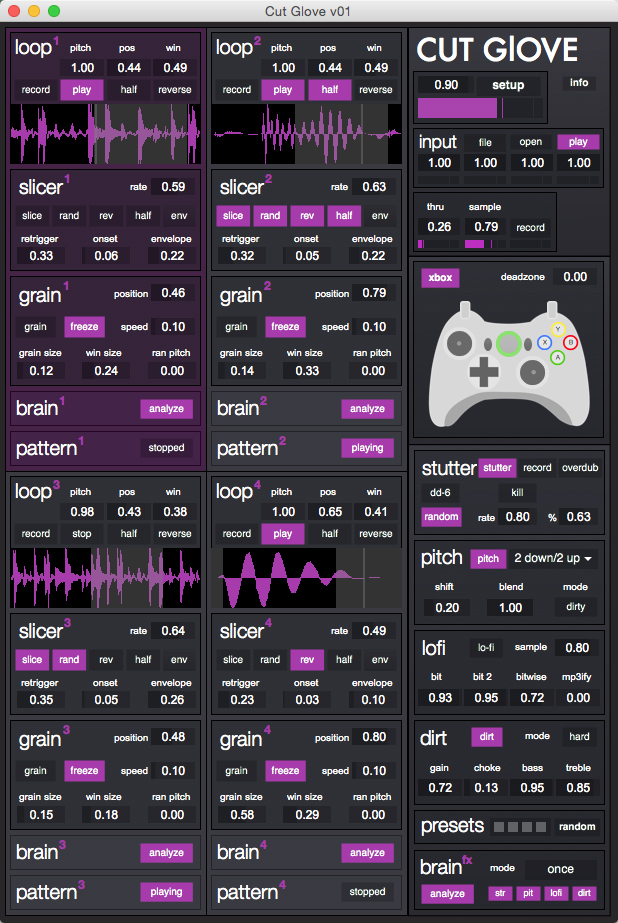
Some of the core ideas in the patch are based on sampling and processing modules I developed in The Party Van, another piece of software I’ve written. However, in Cut Glove I rebuilt everything completely from scratch, with tons of new features, more options, better overall sound, etc…. At the core of Cut Glove is karma~, a Max external I recently put out which can you read about in detail here.
Before I go into detail about what Cut Glove does, and more importantly, how the mappings are implemented, here is the first of three Cut Glove performance videos in this blog post:
You can click here to download Cut Glove(v01), the required externals, and instruction manual.
The rest of this blog post will go into detail about the background, development, and technical implementation of Cut Glove.
Making decisions in time

///////////////////////////////////////////////////////////////////////////////////////////////////////////////////////////////////////////////////////////////////////
Table of Contents
Background
Development
Implementation
Analyses
The Future
///////////////////////////////////////////////////////////////////////////////////////////////////////////////////////////////////////////////////////////////////////
Background
It started with a simple question: “Why compose at all?”
At the time I was working on what would later become iminlovewithanothergirl.com and was trying to figure out how to deal with composing for myself as an improvising solo performer using a new/invented instrument which is difficult to reproducibly control. This marked a big shift in my compositional thinking. I began moving away from precomposing discrete gestures and started focusing on pure improvisation. I carried on this line of thinking through multiple compositions and projects over the next three years and eventually produced a framework for thinking about improvisation – making decisions in time.
dfscore
Here is a short video introduction of the dfscore system, which I’ve been working on for some time now.
The dfscore system is a dynamic score display system built to function over a local network to display a variety of musical material. The primary motivations for building the system were to allow for a middle ground between composition and improvisation, and to be able to dynamically restructure and reorchestrate material on any given instrumentation.
The first performance utilizing the system will be on the 18th of September at The Noise Upstairs.
You can read more about the project here:
New Instrument – Grassi Box
I’ve been working on a relay-based hardware repatching instrument for quite a while. The idea being that I could use my computer (running Max) to control a bunch of my weird (ciat-lonbarde) hardware synths.
I recruited Dan Wilson of Circitfied to build the transistor/relay system that works on top of the Arduino teensy core.
Here is a video using attack-based random repatching of an Old Mr. Grassi using my drumset.
And here is a video using prepared/bowed guitar to drive analysis-based resynthesis of a Fourses and Fyrall:
The Party is back
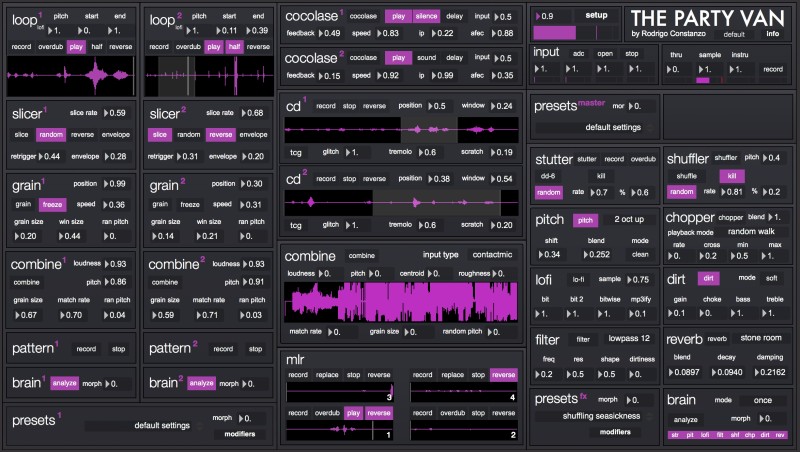
After over a year, I’m finally putting out a version of The Party Van, a free software system/instrument/environment that I built in Max. It’s also officially out of beta now and the version numbers will reflect that. It has gone from v09 to v1.0. It’s been about three years since I started working in Max again and started building what eventually became The Party Van. The software has changed radically since the last release, and has been ready to release for some months now. It was just a matter of making the time to finish updating the manual with all the new features/sections/etc….
I have to thank all the guys on the monome forum for keeping me still plugged into getting the software public-ready and specifically to Thorsten and Morgan for helping me finish the manual.
You can download and find out more about The Party Van by clicking here.
And here are a couple of videos made using The Party Van.
C-C-Combine
C-C-Combine is a corpus-based audio mosiacing application, built in Max/MSP, based on concatenative synthesis.
It sounds like this:
And looks like this:

I Rock the Party that Rocks the Party
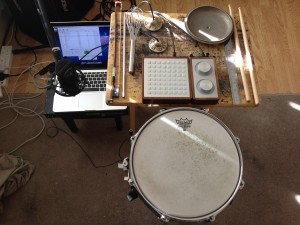
So as you may know from some of my previous posts I’ve been doing lots of Max/MSP programming, moving my previously hardware-centric performance setup into the laptop.
I recently put out the v05 version of my Party Van software, and it is looking/sounding great if I don’t say so myself.
Here’s a performance video using solo snare + electronics:
The Chocolate Grinder
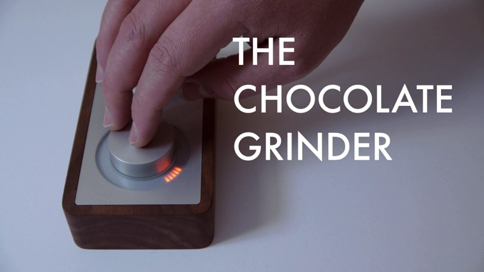
The Chocolate Grinder is a software emulation of a skipping/glitchy CD player.
It sounds like this:
And looks like this:
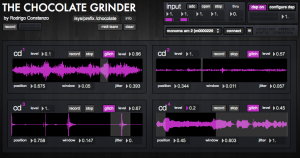
The Party Has Begun (Max/MSP+Monome)
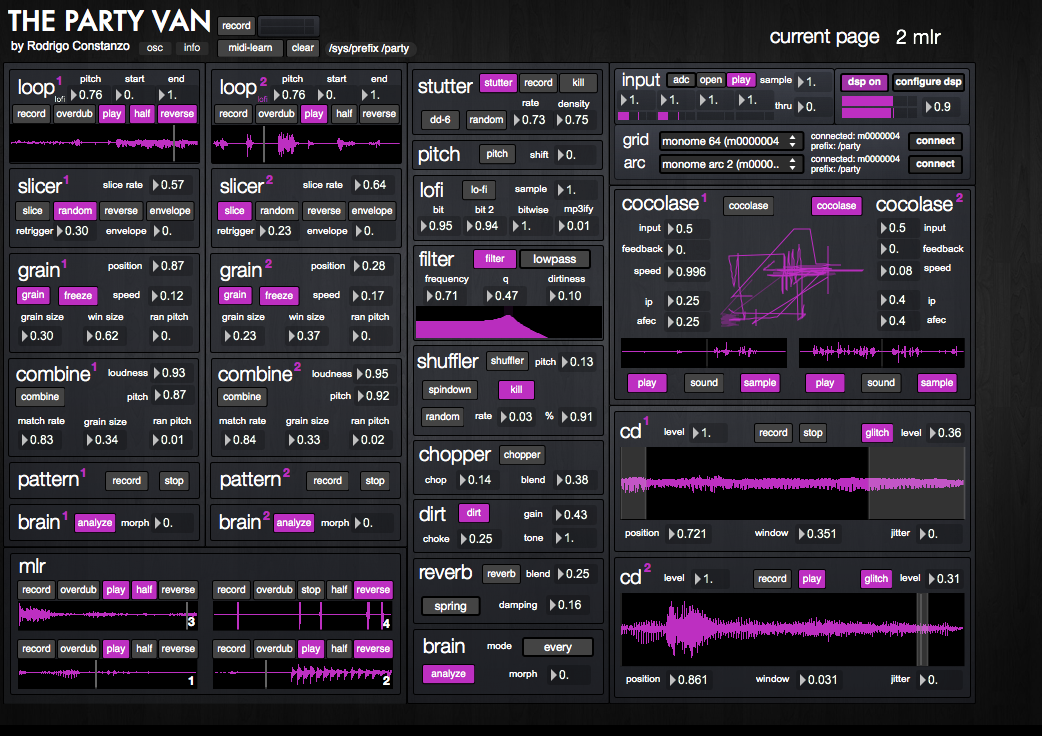
So a few months ago I experienced a big paradigm shift. I had been a lofi/hardware guy for many years, but when planning my next big change in hardware, I decided it would be easier to just built it in Max/MSP instead. So I started doing that.
I made this post back in September with the first module of what would become the setup I’m working on at the moment.
Well I’ve been hard at work since then!



